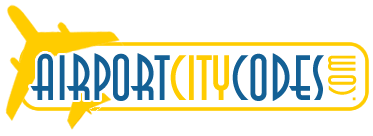What is a Hub and why do airlines
Hub?
How many times have you heard the term "hub" or
"mega-hub" or "fortress-hub" tossed around blithely by journalists, politicians, airline
employees ("welcome to city X, our hub"), or by your traveling companion? Chances
are that very few of them know or understand what youre about to read here. To be
sure, most of them understand that a hub is where all the planes are painted the same
color and you connect to other planes, but do they really understand why most airlines
operate this way?
You may also get the impression that places like Dallas/Fort
Worth or Pittsburgh Airports are places that constantly teem and bustle with humanity.
Actually, these airports are very quiet places as well. After all of you are on the
plane sipping your diet-coke and crunching your pretzels, it's hard to find a person
who isn't either sweeping the floor, propping up the bar, or headed to the break-room.
Airlines realize that passengers typically want to travel
between two cities (city-pairs), but not everybody wants to travel between the same
cities. In fact, in a country like the U.S. where the population is widely dispersed
and economically active, you will find a constant demand for travel services from
towns of all sizes in all locations. The hub is a market response to meeting the need
to capture all this travel demand in an economic way. If you click
on this link, you'll find a chart and
a table that explains how airlines achieve this through a process called a "flight
bank" or a "flight complex". These technical terms refer to a set of airplane arrivals,
then departures that through the wonders of mathematics combine to serve the maximum
number of city-pairs, and hence capture the maximum number of people, and the maximum
revenue. If you can get 20 aircraft to land within 30 minutes, then all take off again
30 minutes later, you can provide service to 440 city-pairs! Pretty slick huh! The
formula used here is n2+2n.
Calculate for yourself how many city-pairs are served when 40 aircraft are on the
ground at the same time, and then consider that some mega airlines do this 5 times
a day at two or three hubs.
So in order to make this economical, you put the
small planes with lower costs to places with few passengers, medium sized planes with
medium costs to places with a medium amount of people (you spot the trend) and bring
them to the hub at the same time, several times a day. Typically everyone then runs
around trying to find their next plane, hoping their baggage is as fast as they are,
some people (20-50%) leave or arrive at the airport. Then, after the frenzy is over
the dust settles until the next set of arrivals and departures.
Typically the hub itself is in a large city that
has lots of people wanting to come and go, it is located well geographically -- that
is 1-5 hours between large population areas in more than two directions, in order
to achieve the right scale necessary to support the operations. So maybe you knew
this too. There are exceptions of course, but remember that either the exceptions
work because they work in-between the hub choices made by others, or the geography,
politics, economics, or population of the region simply don't allow for the formation
of a hub.
Hubs place a tremendous strain on resources, and
increase costs because you have to provide enough resources to manage the peaks, then
everyone sits around and waits. If all the arrivals and departures were spread throughout
the day then you would need less people and equipment and save money right? However,
the airlines figured correctly, that if they do it right then the increase in cost
will be offset by a greater increase in revenue by serving more city-pairs and they
would be ahead and have a greater market share, thereby weakening the competition.
Copyright -- Russell Ryan
Do not reproduce without my permission.
June 2, 2000
